By Cristan Williams
Upon completion of this series, this work will be released, in its entirety, as both an audio and ebook.
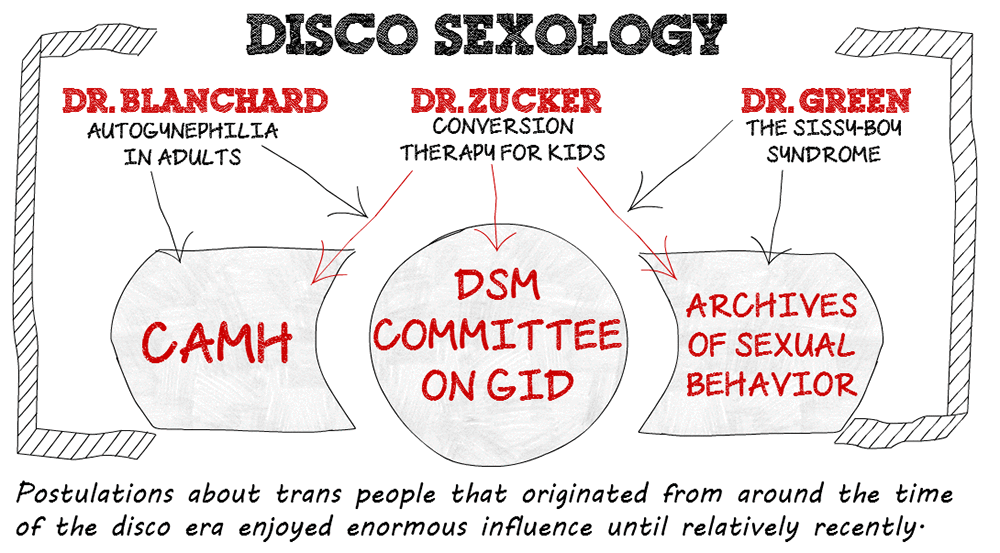

Installment Preface
Welcome to the seventh installment in this series on the rise and fall of Disco Sexology. In the previous installment, I interviewed the co-founder of the Gender Infinity conference, recently picketed by the Westboro Baptist Church because the conference provides affirmative support to trans kids and their family members, as well as training for providers of therapeutic and medical care. In this installment, I interview radical feminist and pioneer in the affirmative model of trans care, Arlen Lev. Thirteen years ago, Lev published one of the first affirmative care books titled, Transgender Emergence: Therapeutic Guidelines for Working With Gender-Variant People and Their Families.
Affirming therapeutic models offer a patient-therapist relationship wherein the patient’s gender isn’t problematized. This approach was recently criticized in a BBC documentary titled, Transgender Kids: Who Knows Best? wherein a Disco Sexologist named Dr. Zucker compared affirming models of care to buying dog food for kids engaging in anthropomorphic schoolyard play:
“It is possible that kids who have a tendency to get obsessed or fixated on something may latch on to gender. Just because kids are saying something doesn’t necessarily mean you accept it, or that it’s true, or that it could be in the best interests of the child.” He later added: “A four-year-old might say that he’s a dog – do you go out and buy dog food?”
This installment represents the fourth of five interviews I conducted with individuals intimately knowledgeable about the nuanced differences between Disco Sexology and affirmative care.

A Conversation with Affirmative Therapy Pioneer & Radical Feminist, Arlene Lev, LCSW-R, CASAC, CST

Arlene Lev is a social worker and family therapist who has been working with trans people and their families for nearly 30 years. While I was aware of Lev’s work through her pioneering 2004 book on affirmative therapeutic practices, Transgender Emergence, I got to know Lev in my research into the rich history of trans-inclusive radical feminism. As with the feminists who challenged the authors of the DSM-III to depathologize gender nonconformity, I found that Lev’s analysis, contextualized by her radical feminism, offers a critical yet humane understanding of Disco Sexology.
Cristan Williams: While Dr. Zucker seems to reject the notion that the type of therapy he was engaging in would be classified as “reparative therapy,” in a 2015 interview with the National Post, he indicated that his therapy would prevent children from growing up to be transgender. He said, “You are lowering the odds that as such a kid gets older, he or she will move into adolescence feeling so uncomfortable about their gender identity that they think that it would be better to live as the other gender and require treatment with hormones and sex-reassignment surgery.” Moreover, in 2016, he and Dr. Green gave back-to-back presentations at WPATH, urging WPATH members to take a stand against laws banning reparative therapy.
The type of gender therapy practiced by Dr. Zucker seems rooted in the type of therapy promoted by Dr. Green who, in 1971, wrote:
My focus will be what we might consider the prevention of transsexualism… I believe an effort should be made to make a psychiatric intervention during a life period in which gender misidentification may be reversible, thus saving the individual a considerable amount of subsequent distress. If we are to do this, we need to focus on a pediatric population.
This approach to trans issues seems to be quite different and distinct from the therapeutic model of affirming care you helped pioneer. How do “affirming” models of gender therapy differ from the model Drs. Green and Zucker helped pioneer?
Arlene Lev: Well, you know Cristan, one of the fascinating things in terms of how our queer/trans communities have grown and expanded in the past decades is that once upon a time Green and Zucker were viewed as “progressive” in their views about gender, and sexuality. They were active in removing Homosexuality from the DSM, and although it’s hard to see from our contemporary vantage point, they were active in having GID placed in the DSM precisely because it would provide treatment for transsexuals at a time when few professionals provided services s for trans* people at all – back in the day, the diagnosis made the path to hormones and surgery possible. There are a number of trans professionals who still see this as a major reason to retain the diagnosis. Green and Zucker both spent their careers (like John Money) dedicated to sexology during a time when this basically labeled them pariahs within the professional psychology community.
So I think all things need to be in perspective. Dr. Zucker spent much of his career studying a population virtually no one cared about or had experience working with – what some now call gender-variant children and transgender youth. He was a researcher and clinician. His body of research is quite extensive, and actually quite interesting, and I recommend more people actually read his work. I found that most of his critics have read none of it. I encourage people – especially therapists – to read it because there is much to be gleaned from it. He actually raises important questions about how young people experience gender, and how we as therapists can begin to understand their developmental processes. I think those of us who are therapists and researchers need to be asking lots more questions about this, but from an affirmative point-of-view, not an oppressive one.
I am not saying this to defend Zucker in any way. I have been publicly and professionally opposed to his treatment modalities for more than two decades. Having said that, I do think some of the criticisms of him have been “over the top,” in terms of demonizing him far more than he deserved. His body of work stands on its own; there is much to criticize. However, claims of him being a “Nazi” make me crazy (both Ken Zucker and I are Jews). What I have long said about Zucker, is that he is at heart sexist – he truly believes that boys and girls are fundamentally “different,” and that these differences lay in superficial things like clothes and toys. He is at heart cisgenderist, in the sense that he truly believes that being cisgender is a more “optimal” outcome than being trans*, a concept I find quite absurd. His body of work, and his therapeutic modalities come from these assumptions.
For the past decade, he has spent a lot of time talking to those of us with affirming treatment ideologies, engaging us in conversations. Most of us have been skeptical of his intentions – perhaps even feeling a bit “stalked” by him — though I believe he is at least in part truly curious about these newly emerging affirmative practices. Zucker is not the monster he has been made out to be in my opinion. He is actually a very intelligent and in some ways caring and compassionate man. Although I completely understand how young activists can see his work as intentionally harmful to trans children and youth, I don’t believe his intention is harmful at all. I think he truly believes he is helping young people by helping them to be comfortable in their natal bodies. He is, however, profoundly wrong about gender-variant kids and transgender people, and has ultimately caused a lot of damage. Perhaps “intentions” do not matter at all, when the outcome is so destructive. However, by analogy, I would suggest there is a difference between Neo-Nazi’s/KKK people, and racists who think African-Americans should pull themselves up by their own bootstraps. Both are racist and breed potentially dangerous public policy and need to be fought. But they are fought, in my opinion, with different weapons. The latter group can be engaged in dialogue with and educated; the first group I suspect not.
I think it is an important sign of our times that Zucker is no longer in charge of CAMH, and that his treatment philosophy has been widely rejected. He was recently ousted from speaking at the inaugural USPATH conference. But we also need to be aware that he is not “going away.” He is still often called upon to speak on television and he is widely published so his voice reaches a very mainstream audience. The panel that was canceled at USPATH had excellent speakers on it, who could have really publicly challenged his ideas if they had been allowed to continue the panel and discussion. I prefer to engage him versus silencing, but I know I’m in the minority on this issue. I worry a lot about censorship and how less popular voices are treated, I suppose because I have often been the boy in the Emperor’s New Clothes, saying things that others don’t want to hear. I also like to keep my enemies close, I guess.
Affirming practices are to some extent simple, in the sense that as therapists we are not pathologizing any expression of gender –regardless of one’s anatomy– and supporting and validating the expression of diverse gender experiences. For me, a key component of this is to support the families, who often experience far more distress than the children themselves do. Affirming practices support the emergence of trans identities with the same joy as we would cis identities.
As I often say when presenting: Regardless of whether a gender nonconforming child transitions socially, it is in the best interest of all children expressing gender nonconformity to have their authentic expressions of gender supported by peers, parents, teachers, and other adults in their lives.
Williams: The type of gender therapy historically practiced at CAMH seemed to embrace Green’s Sissy Boy Syndrome ontology whereby gender non-conforming and trans children are conflated with each other based upon the postulation that gender nonconformity produces physical gender dysphoria; in other words, kids sexed male at birth want to physically transition because they like pink and speak with a lisp. The Sissy Boy Syndrome study found that since most gender nonconforming kids don’t transition, most trans kids must, therefore, grow out of being trans. This study is still featured in contemporary news media to support the claim that most trans children grow out of being trans. What are your thoughts about Green’s Sissy Boy Syndrome study?
Lev: In order to understand The Sissy Boy Syndrome, you need to look carefully at the research and when the study took place. Richard Green published this book in 1987 and conducted his research in the decade before. He did not receive funding to study gender-variant girls, i.e., “tomboys” by the way, but only “sissy boys.” The boys were recruited from gender clinics – obviously brought to these clinics by concerned parents. His longitudinal study showed that about ¾ of the boys grew up to identify as homosexual, that is, not transsexual (in the language of the times). I think we need, first of all, to look at the social world during the time of this study. The gay liberation movement had come of age. Transgender identity would not become part of the social discourse for another 20 years. I once had a trans friend say to me “When I found the gay community it was the closest thing to home I’d ever found…. But not quite.” For a “sissy boy” – a feminine man in the early 1980s, the gay community was a safe place; there was no real trans community – the “gay” community, however, supported gender diverse expression. There is no way, of course, to “re-do” the study in the modern world but I suspect that a matched cohort today of “sissy boys” might have a far more diverse set of outcomes, including a higher number of self-identified trans women and non-binary people, simply because it is now possible to affirm diverse trans identities. Naming oneself and finding a home cannot be separated from the social world in which we live, and the possible identities which we can authenticate within the possibilities available to us. More people today can identify as non-binary because the language exists for this identity.
Ken Corbett has noted that there is no “homosexual boyhood” only a theory of adult homosexuality that is “infused with a pathologized gendered past.” As Corbett has remarked, “…within the sissy-boy discourse, femininity becomes a symptom.”1 These concepts were later incorporated into his book Boyhoods.
Diane Ehrensaft has spoken about how Green and Zucker have confused apples and oranges. Many children express behaviors that diverge from the norms of gender expectations. For some this is celebratory; for many (in a sexist and patriarchal culture) it is a source of pain and confusion. We conflate sexual orientation and gender transgression, especially for young boys. If you are the parent of a “sissy boy” (which by the way I was), everyone (including other queer people) make assumptions about your child’s not yet formed sexuality. These experiences are profoundly different from gender dysphoria. Children who experience themselves the “other” sex, often experience profound anatomical dysphoria, as well as societal discomfort. Ken Corbett is correct, however, that what is punished in our culture is femininity in boys (and I might argue in girls too, in different ways).
In these crazy theories, being transsexual is perceived as the extreme pathology, and homosexuality a lesser pathology. Homosexuality and being transgender are sometimes seen as hierarchal disorders, with being transsexual as a more severe type of homosexuality. In one reported “intervention,” a 17-year old boy diagnosed with gender dysphoria was treated with behavioral modification and as his treatment progressed he went from being transsexual to homosexual, until he was finally completely cured, i.e., heterosexual without gender dysphoria.
Williams: Have you found that the physical gender dysphoria experienced by transsexuals is, as these 1970s-era studies suggest, caused by gender nonconformity?
Lev: These are two separate, but overlapping, issues. Gender nonconformity is socially punished. A boy child who wears a pink sweater will experience some level of social ostracism or teasing. A boy child who plays with dolls will be seen as different from his peers. This can be extremely painful, especially if the adults reinforce this social punishment, or do not stand up to protect the child.
However, this is very different from anatomical dysphoria. They may overlap, in the sense that many people who identify as girl/woman/female may desire to, for example, wear feminine clothing or dangling earrings, or red lipstick. This would be perceived as “gender non-conforming” if this person was not seen socially as a girl/woman/female but rather as a boy/man/male. There is great pain in not fitting in socially. But one can like clothes or toys that girls/women like and still very much identify as a boy/man.
So I guess the answer is “No, of course not.” However, gender dysphoria is reinforced by the social rules about gender conformity. If boys and girls could wear whatever the hell they wanted, and men and women could too, then some people would still experience gender dysphoria, but they would not experience social punishment.
Williams: Have you had any trans clients undergo reparative therapy prior to working with them? If so, would you please talk about your experience with these clients?
Lev: Recently I have worked with a number of teens who have worked with well-known therapists who practice what some call reparative therapy, though those therapists would not identify as practicing that way. These kids experienced behavioral interventions as children, framed within a psychodynamic frame, that is, not enough father and too much mother. These people are still teens and did not necessarily experience these early therapies in a negative way. I suspect they did not understand the intention of the therapy, but remember the therapist as helping them deal with “anxiety” or “depression.” Because I also worked with the parents, I understood more about the intention of the therapy, and the choice for working with that therapist at the time.
All of the teens identified as trans and were seeking puberty blockers and/or hormones. However, the parents remained resistant. The parents also saw their children as suffering from other psychological issues, which is why they hesitated to assist in the transition “yet.” Although I also saw these young people as struggling with anxiety, depression, and other painful identity issues, I thought these were exacerbated by their gender dysphoria. I do not know if earlier medical transition would’ve “cured” them of the anxiety of depression, but I do think it would have ameliorated some of their distress, especially by being authentically seen by their parents. The kids were all living socially transitioned lives, and I am fairly sure will medically transition as soon as they are of legal age to do so, since their parents remain resistant.
Williams: Would you please talk about the dangers, if any, of trying to use psychological pressure to convert trans people into cis people?
Lev: All of us need to live authentic lives. Period. When someone is being coerced into living in a way that is not true to their experience, especially during their pubescent and development years, it can be very confusing and damaging to their sense of self. One needs to feel grounded in their bodies in order to develop social and sexual connections – it is hard to do this if the world is forcing you to live in a way that is not true to your core sense of self. Gender is one of the most core identities we have.
Williams: Some claim that without the type of gender therapy championed by Green and Zucker, children who could have been saved from being transgender will be “transed,” as they call it. Those who support this viewpoint to individuals who’ve detransition as proof that being trans is merely a choice and that kids who were “forced” to transition as children will, later in life, regret that someone like Green and Zucker wasn’t there to “lower the odds” that they would transition. Those making this argument claim that since such a hypothetical might be possible, all trans kids should be kept from a social transition, that they should be made to undergo puberty, and that all trans care should only be available to adults.
How would you respond to this perspective on trans care?
Lev: Oi! I want to say this as carefully as I can. Cultural trends tend to move in pendulum swings. Zucker’s approach was intrusive. It was based on sexist, cisgenderist, and oppressive views about trans people, and identity. It was built of outdated psychodynamic concepts of how gender develops in families and based in treatment modalities that just reified societal stereotypes of proper boy and girl behaviors.
I would also venture to say that some gender specialists have little or no training in child psychology and gender development in children and youth. One therapist gave a keynote speech in which he said “I can tell like that” –and then snapped his fingers– “if a kid is trans.” This freaked me out enough to rudely speak up during his talk. How can anyone “know” that? I am the mother of very gender transgressive children, neither of whom would identify as trans. I am also the aunt to two trans kids, and I grew up very close to both and was quite surprised when they came out.
Gender is complex and woven deeply into our psyche’s as well as our families. In some measure, our gender keeps evolving and shifting as we mature, and as the society, we live in expands what is possible.
I think we need to carefully assess young people before recommending medical treatments that can change their bodies and their fertility. Having said that, I do not feel that “protective” about social transitions, or even about blockers, which are all reversible, however, we must not be cavalier in our approach. Therapists should be trained in careful assessment, of the child and the family, providing psychoeducation, and a clinical process that evolves over time as the child grows. Somewhere between, on one hand. withholding treatment and interrogating — and terrorizing — children and, on the other hand, handing out hormones indiscriminately, lies the careful skill and advocacy of trans-affirming therapists.
I do not dismiss de-transitioners as many colleagues and friends, especially some trans-activists friends, do. I think we need to listen carefully to their stories. They are speaking a unique and emerging truth about their authenticity. I do think that as therapists we need to look carefully at trauma, especially as it might manifest in adolescents who are experiencing discomfort in their bodies. I think we need to be sensitive to peer pressure and the power of the internet, and the idea that people might seek solutions to their pain that may or may not be actual solutions to their particular pain.
I prefer to re-frame the de-transitioner narratives as a story of evolving identities. I tell all the young people I work with that how you feel at 13 will be profoundly different from how you feel as 16 or 19. You will continue to grow and expand and know yourself. Your gender identity may remain consistent in that process and may continue to change and shift. In some measure, that is the definition of being a teenager.
I do not think de-transitioners are a threat to the trans community. I do think that therapists should listen carefully to what they are saying. We want to ask all the right questions. We want to support youth in their emerging identities. And we want to recognize that there is much about our newly emerging treatment modalities that we do not yet know. De-transitioners are a small minority of people who transition, but their story is no less valid or important than anyone else’s. A suggestion caution does not mean withholding services.
Some of my colleagues say they have never seen a young person change their mind. I have seen more than a few. Most do not, but for the few who do –and we should remember that our job is not throw hormones at gender dysphoria– but rather carefully assess the distinctions between gender dysphoria and gender nonconformity, as well as family support and psychological functioning, the child’s relationship to the social world, and most importantly their lived experience of gender. The WPATH Standards of Care remind us to provide psychoeducation and offer people information about the diversity of ways they can explore and express their gender. Ultimately transition is a process, and for young people, it happens in tandem with the rest of their psychosexual development. Ideally, the therapeutic relationship serves as a support through the process, and allows people to change direction if that is what happens. There is no right or wrong way to explore one’s gender, express gender, or live a gendered life. Whatever direction people are moving in, the therapist’s job remains the same – to support authenticity with compassion and advocacy. ⬛

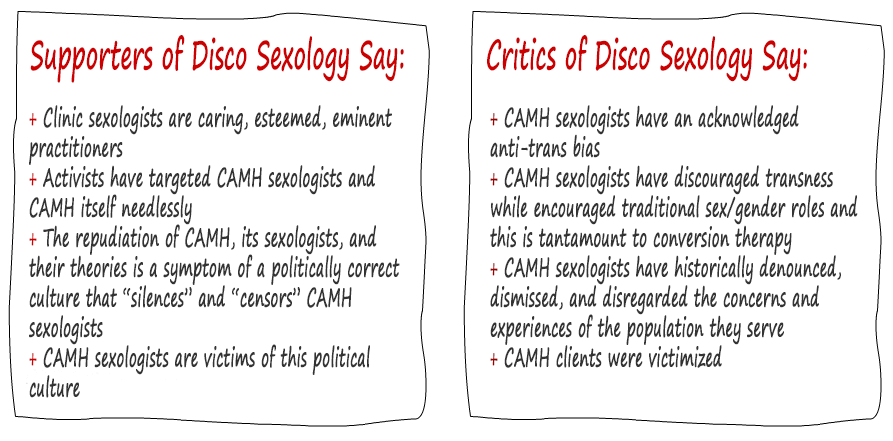
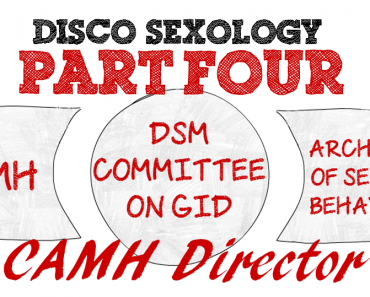
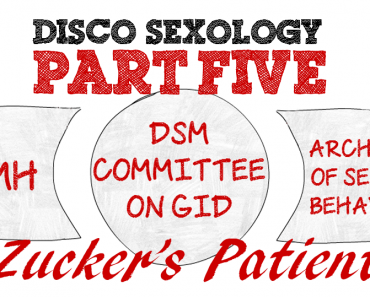
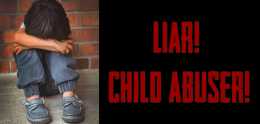
So basically she’s a middle of the road who thinks both sides need to be listened to equally instead of actually taking a stance, and one that’s 100% for the benefit of the patient. It was very telling that when asked about detransitioning she mentioned family support and how the trans person interacts with the social world. It’s sad to know that she doesn’t realize what that actually entails – people afraid to be their authentic selves because they would lose the love and support of their friends and family. So really, they didn’t “detransition,” they just were put back in the closet.
Ugh.